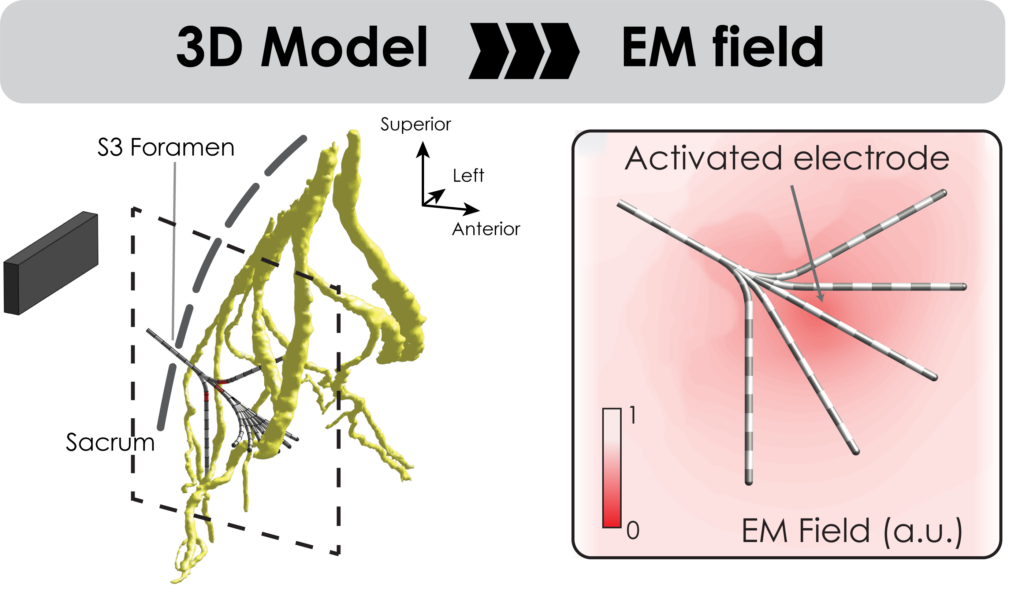Multiphysics simulations
We develop and integrate multiphysics solvers, typically based on the finite element method (FEM), into high-performance computing frameworks to accurately model the distribution and interaction of external physical stimuli generated by medical treatments and devices in the human body.
Instead of creating a one-size-fits-all software, we focus on a versatile computational framework that includes various tools, pipelines, and workflows tailored to different treatment modalities and user needs. We often integrate existing solvers, like Sim4Life and FEniCS, to streamline the process. A preliminary version of our framework has proven useful for therapy design and clinical decision support in spinal cord stimulation to facilitate lower limb motor function. We’ve expanded this framework for high-performance computing as well as locally-deployable applications across various neural engineering treatments.
Discretizing FEM models can be complicated, especially when dealing with intricate neural structures like spinal rootlets. To simplify this, we have adopted voxel-based meshing techniques, moving away from traditional unstructured meshes. This change facilitates the creation of personalized models and a wider range of model cohorts.
Moreover, assigning conductivity values in FEM models typically uses isotropic formats, but we have introduced standardized routines for assigning anisotropic conductivity tensors based on auxiliary electromagnetic simulations. This innovation helps ensure more accurate modeling and supports the generation of streamlines for advanced 3D volume generation.

First Published on September 22, 2024
Last Updated on October 7, 2024 by Zhaoshun Hu